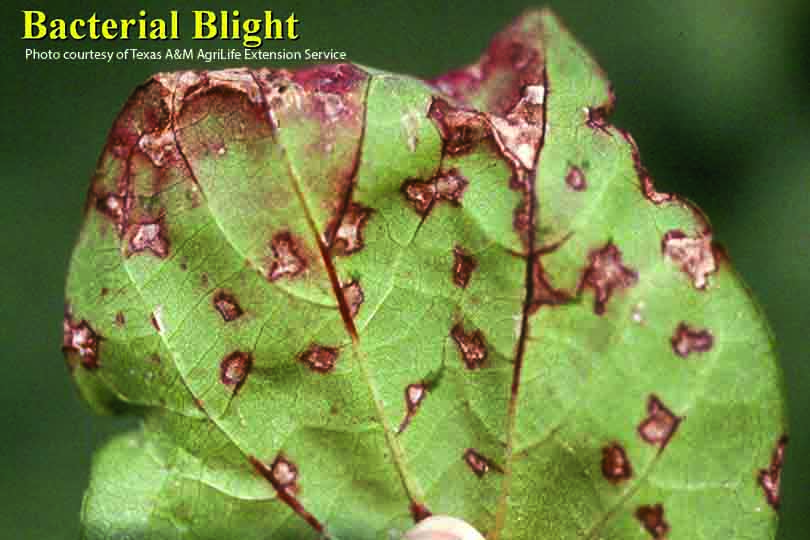A devastating disease that wiped out thousands of acres of cotton annually is back. And it’s affecting cotton that was previously less susceptible to the disease.
Six years ago, bacterial blight caused by Xanthomonas citri subspecies malvacearum, or Xcm, returned to the Lone Star State.
But it’s not all bad news.
Recently, researchers have been able to learn more about the disease and how it works.
“The bacterium tricks the host to produce food for itself. But once the bacterium is in the plant, it saves its own resources and switches the plant’s transportation of sugar to itself. The host plant is deprived of sugar needed for energy, can’t get rid of the bacteria and the disease progresses,” Dr. Libo Shan, Texas A&M AgriLife Research plant pathologist in College Station, said . “This bacterium is very smart.”
They’re hoping the information they’ve uncovered will help cotton farmers across the nation.
“This bacterium causes disease in cotton by using a secret weapon, a sort of needle-like structure, to inject the protein effectors into cotton cells,” Shan said. “One of these effectors mimics the host transcription factors, directly targeting and activating the host gene transcription of a plant sugar transporter. The plant then begins to pump energizing sugar from within the cell to the apoplast or pathway of the cell, thus feeding the bacteria.”
Xcm bacterial blight first appears in cotton as brown spots on leaves, stems and bolls. It spreads until the plants drop their leaves and quit growing.
Not only can it devastate entire fields of cotton, it also affects rice and cassava.
AgriLife Research scientists discovered the bacterium’s “secret weapon” while taking a deep look at the bacterium and cotton interaction at a cellular level.
The discovery was made in part by Kevin Cox, a Texas A&M doctoral student from St. Louis, Mo., who has been working with Shan for nearly four years and is lead author on the paper.
“My part of it was basically to identify what gene was being activated by a particular effector from the bacteria in order to cause disease,” he said. “When we found out what the target of that effector was, that’s when we got excited. That was pretty cool.”
Shan said the excitement reverberated among researchers for several reasons.
“First, it will provide a mechanistic understanding of how the bacterium causes disease in cotton, and second it provides a potential strategy for control of this cotton disease and resistance against the bacteria,” she said. “Third, it may provide potential tools to do earlier diagnostic for the presence of this disease before symptoms show in the field.”
That’s important, Shan said, because once a farmer sees the disease in the field, it’s too late.
Xcm bacterial blight is very hard to control. It can cost cotton farmers up to a 40 percent yield loss in affected fields.
Shan told AgriLife Today the team will continue to explore bacterial blight in cotton, as well as the implications for rice and cassava.

